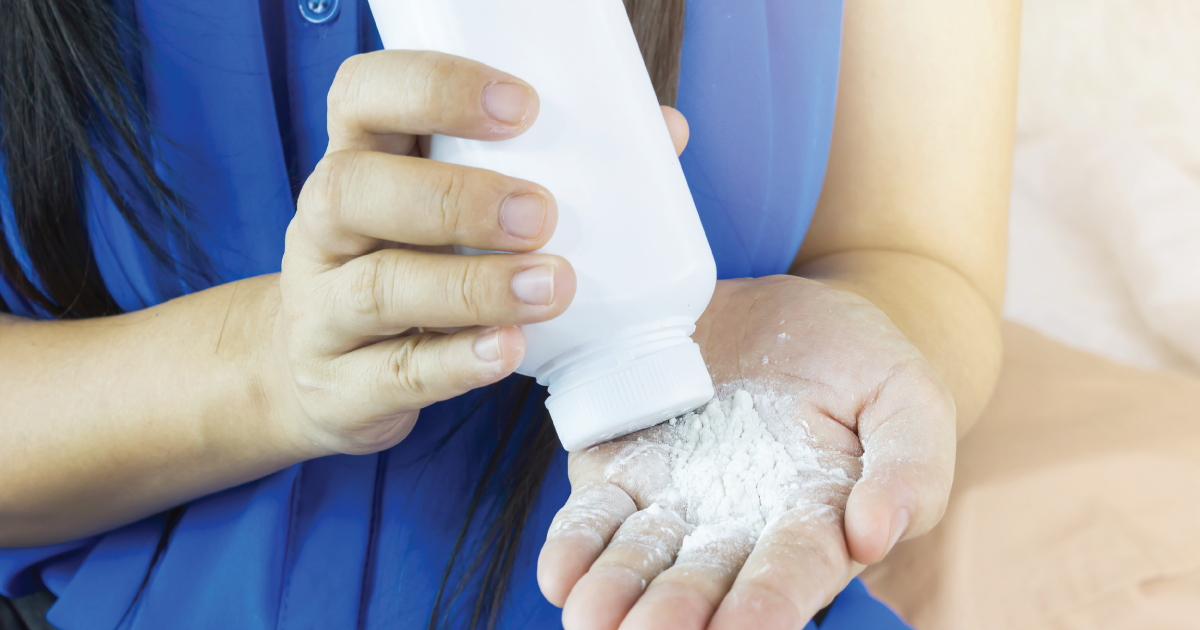
$4.7 Billion Judgment for Asbestos in Talcum Powder
In the largest verdict yet to hit pharmaceutical company Johnson & Johnson, a jury awarded $4.69 billion to 22 women who allege the company's talcum powder caused their ovarian cancer. This includes $550 million in compensatory damages and $4.14 billion in punitive damages.
July 31, 2018 | Source: Mercola.com | by Dr. Joseph Mercola
In the largest verdict yet to hit pharmaceutical company Johnson & Johnson (J&J), a jury awarded $4.69 billion to 22 women who allege the company’s talcum powder caused their ovarian cancer. This includes $550 million in compensatory damages and $4.14 billion in punitive damages. The cancer survivors, as well as the loved ones of six plaintiffs who died from ovarian cancer, testified that they used J&J’s talcum powder, including Johnson’s Baby Powder and Shower to Shower products, for decades, particularly in their genital area.
Not only have talc products been linked to ovarian cancer in the past, but they’ve also been found to be contaminated with asbestos, a cancer-causing agent that’s been linked to mesothelioma, a rare but aggressive form of cancer that can develop in the lungs, stomach or heart. This case was unique in that it’s the first to suggest that talc contaminated with asbestos was involved in ovarian cancer. Mark Lanier, lead trial counsel for the 22 women, said in a statement:1
“For over 40 years, Johnson & Johnson has covered up the evidence of asbestos in their products … We hope this verdict will get the attention of the J&J board and that it will lead them to better inform the medical community and the public about the connection between asbestos, talc and ovarian cancer.
The company should pull talc from the market before causing further anguish, harm, and death from a terrible disease. J&J sells the same powders in a marvelously safe cornstarch variety. If J&J insists on continuing to sell talc, they should mark it with a serious warning.”
Internal Evidence Suggests J&J Was Aware of Asbestos in Their Talc Products
Internal documents presented at the trial showed that J&J officials knew for at least 30 years that asbestos had been found in its talc powders. Talc is a clay mineral that’s easily crushed to make a fine powder. Marketed for use as both a baby product for infants in diapers and a feminine hygiene product to help reduce odors and moisture, talc often occurs naturally near asbestos, a cancer-causing mineral that kills more than 100,000 people each year and is banned in 60 countries.2
The mining process is said to cause the two closely related minerals to become intermingled, leading to contamination risks. Cosmetic companies are supposed to purify talc before using it for this reason, and since the 1970s, all talcum powder sold in the U.S. is supposed to be asbestos-free; however, sometimes contamination occurs.3
At the landmark trial, evidence was presented that J&J’s talcum powder products were “laced with asbestos for decades, in spite of the representations J&J made to the FDA [U.S. Food and Drug Administration] and others.”4 Medical experts also offered testimony that asbestos fibers could enter the body via inhalation or application to the genital area.
Further, ovarian tissues from many of the women tested positive for both asbestos fibers and talc particles. About 9,000 more talc-cancer cases have already been filed against J&J, and the favorable verdict is likely to prompt even more. The pharmaceutical giant continues to claim its products are safe, do not contain asbestos and are not linked to ovarian cancer. It plans to appeal the verdict.
Talcum Powder Linked to Ovarian Cancer
Even talcum powder that’s supposedly asbestos-free has been linked to ovarian cancer in the past. The International Agency for Research on Cancer (IARC), which is part of the World Health Organization (WHO), classifies the use of talcum powder on the genital area as “possibly carcinogenic to humans.”
In 2008, a study of more than 3,000 women found using talc once a week raised the risk of ovarian cancer by 36 percent while using it daily increased the risk by 41 percent.5 A 2013 study also found genital talcum powder use was associated with a modest increased risk of ovarian cancer,6 while a 2016 study revealed an association between genital talc use and ovarian cancer, with risk increasing with greater “talc-years” of use.7 In all, at least 20 studies are said to link talcum powder use to ovarian cancer.8
As for how talc could contribute to cancer, it’s possible that the mineral could travel to the ovaries via the vagina, leading to cancer-causing inflammation. Dr. Adetunji Toriola, a Washington University epidemiologist at Siteman Cancer Center in St. Louis, said in a news release, “We know that inflammation increases ovarian cancer risk. We know talcum powder causes inflammation.”9 Although the most recent trial is the largest verdict to date, other juries have also sided with victims and awarded sizable sums in damages.
For instance, in February 2016, a jury found J&J’s talcum powder contributed to a 62-year-old woman’s ovarian cancer, awarding her $72 million in damages. In May 2016, another woman was awarded $55 million in damages after talc embedded in her ovaries was found to have contributed to her cancer. Internal documents and memos sealed the deal for jurors in this case as well, proving the company “tried to cover up and influence the boards that regulate cosmetics.”10
